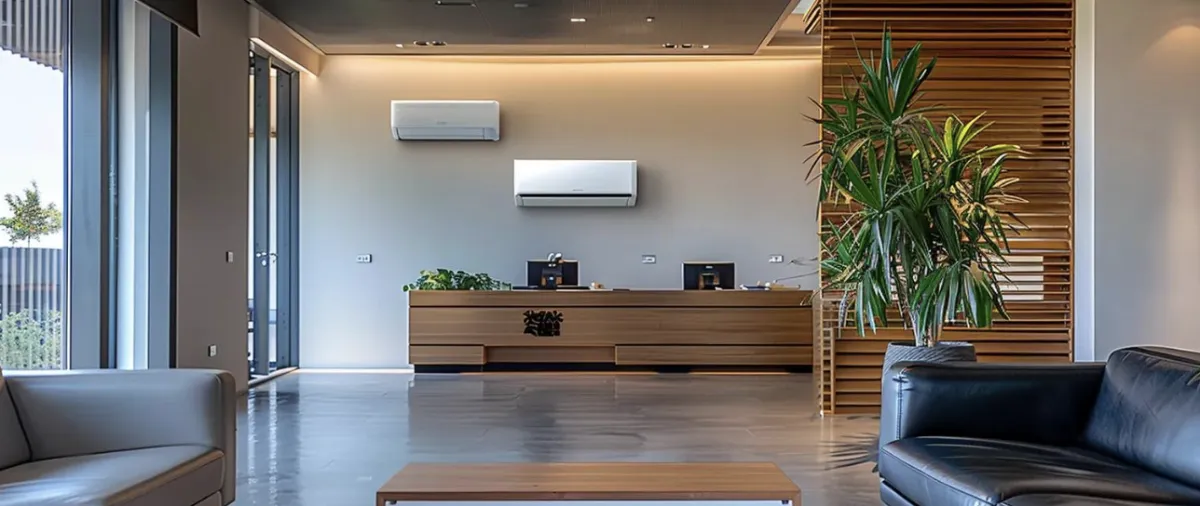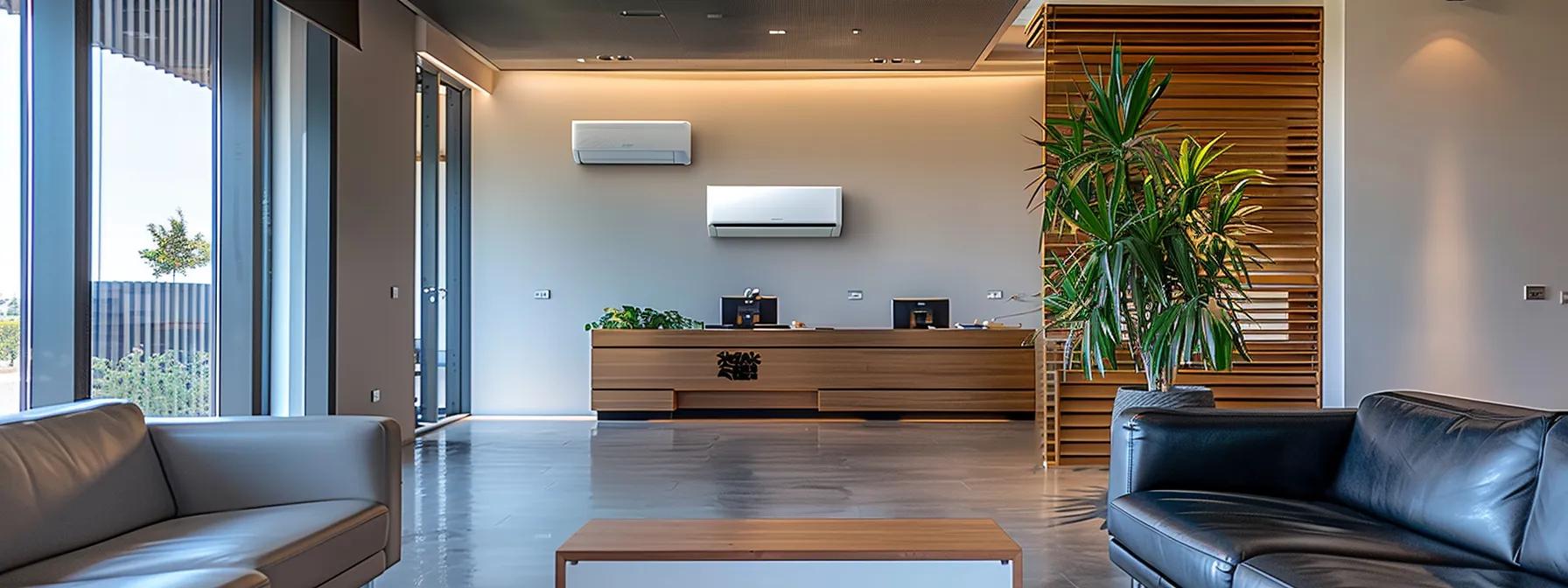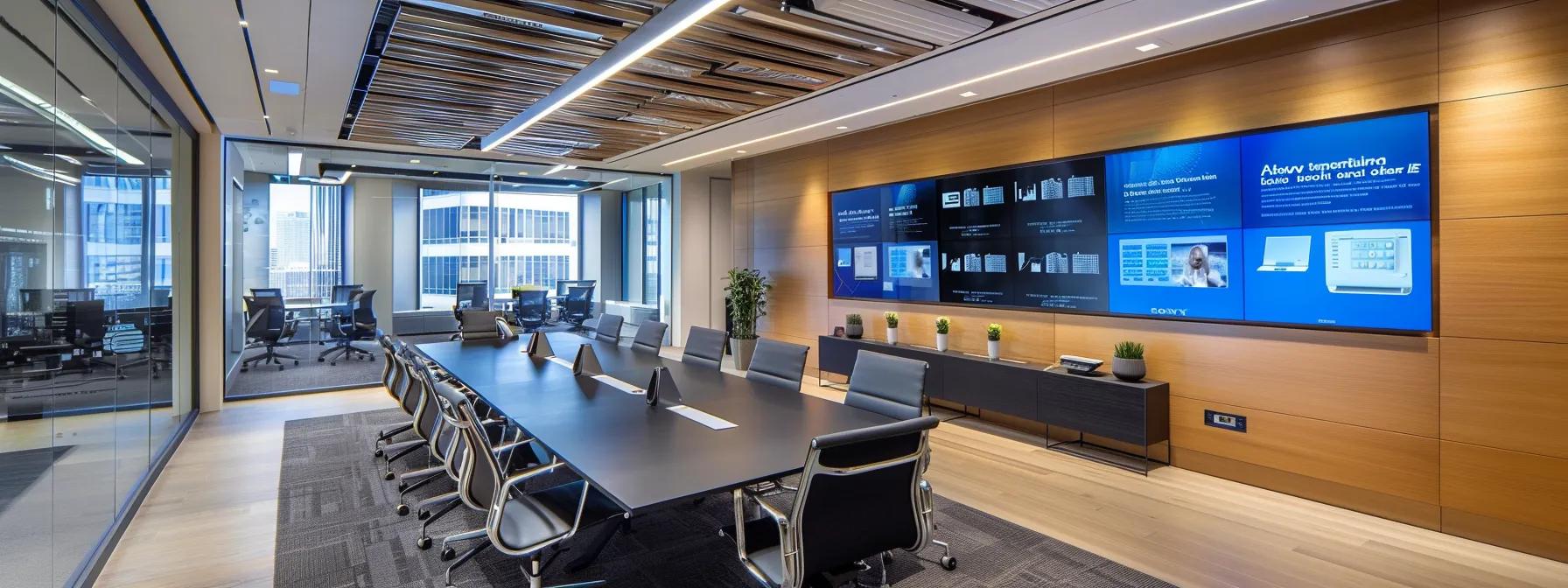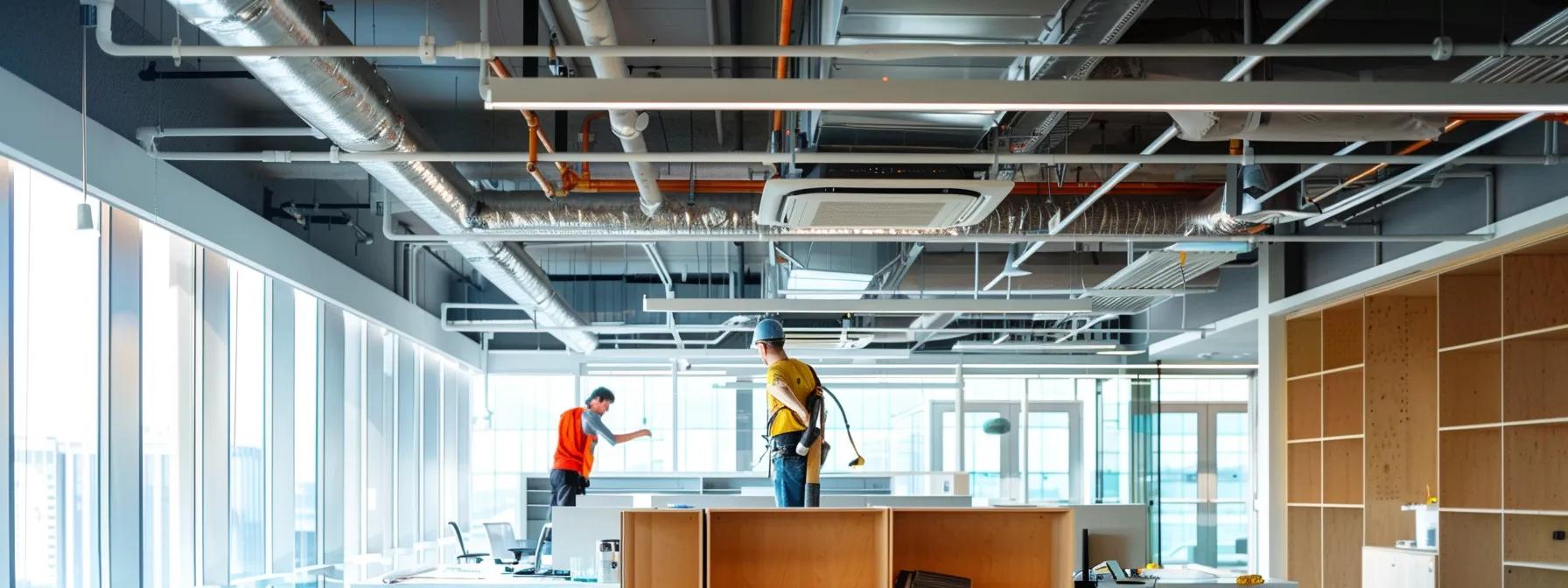
Key Factors Influencing Mini-Split System Installation Costs

Key Factors That Influence the Total Cost of Installing a Mini-Split System
Installing a mini-split HVAC system can be a game changer for small businesses seeking an energy-efficient solution to regulate indoor climates. Understanding the various factors that influence the overall price is essential for making an informed decision. Shelly Heating will happily walk you through mini-split systems available as offer the benefits of ductless installation, improved energy efficiency, and flexibility in zoning compared to traditional HVAC systems. However, pricing varies based on several key factors—ranging from the unit’s components and features to labor costs and installation complexity. With rising concerns about cost of living, energy prices, and tax incentives such as those provided by the inflation reduction act, businesses must carefully consider their investment. This article comprehensively examines the elements that determine the total installation cost—from system components and installation labor to structural considerations and permit fees. In doing so, it provides practical insights and actionable information for business owners focused on minimizing expenses while maximizing potential energy benefits and indoor air quality.
Transitioning into the detailed analysis below, the discussion highlights technical features like BTU capacity and SEER ratings, while also addressing installation components such as wall types and electrical work. This structured approach will guide you through each factor, enabling you to align your installation project with both budgetary constraints and long-term performance goals.
Understanding Mini-Split System Components and Their Price Impact

When planning to install a mini-split system, understanding the inherent costs of its components is the first step. The system’s components, such as the indoor units, outdoor compressor, and refrigerant lines, directly impact the overall price. For instance, households and businesses looking for higher cooling capacity will often need a larger BTU unit, which in turn increases the initial investment. Mini-split systems come in both single-zone and multi-zone configurations, and the differences in price are primarily due to the number of indoor units connected to a single outdoor condenser. Single-zone systems tend to be less expensive than multi-zone configurations due to fewer components and reduced installation complexity.
Additionally, the BTU capacity and its role in determining unit cost cannot be underestimated. A higher BTU capacity not only provides higher cooling or heating output for larger areas but also translates into a higher initial price tag and potential maintenance costs over the system's lifespan. These units have to move more air and require stronger compressors and larger condensers, all of which influence efficiency and long-term energy consumption.
How SEER rating affects the initial investment and long-term savings is another crucial point. The Seasonal Energy Efficiency Ratio indicates the unit’s efficiency level—with higher SEER ratings leading to greater energy savings. Though units with high SEER ratings command a higher upfront cost, they reduce utility bills over time. For instance, a mini-split system with a SEER rating of 21 may cost more at the time of installation but can lead to significant savings in terms of reduced energy consumption compared to older, less efficient systems.
Price variations among different mini-split brands also play a significant role in cost determination. Established brands often offer more reliable products with better warranties, advanced control features, and enhanced durability, which may justify a slightly higher price. Conversely, lesser-known brands might provide a more budget-friendly alternative, but they can sometimes lack the support network necessary for smooth post-installation service.
Optional features and accessories add to the overall expense as well. Features such as remote control access through Wi-Fi, smart thermostats, and advanced air filtration systems can significantly increase the price. In some cases, the installation may include add-on components such as additional mounting hardware, extended warranties, or integration with existing building management systems. These extras, while optional, might become necessary based on the specific demands of the space or environmental conditions.
Research studies have shown that investing in higher efficiency units, despite their elevated initial cost, tends to lead to long-term energy savings by reducing overall consumption. For example, a peer-reviewed study by Das et al. (2021) demonstrated that mini-split systems with advanced features can lower energy consumption by up to 30% compared to traditional HVAC systems. This outcome translates to not only savings on the utility bill, but also a reduction in the facility’s carbon footprint—two major factors for environmentally conscious business owners.
In summary, understanding the impact of mini-split system components on price is essential. Business owners should evaluate their requirements, taking into account the size of the space, the need for multiple indoor units, and any additional features that might improve indoor air quality and system performance. This methodical approach helps balance the initial purchase cost with long-term savings, ensuring the investment aligns with future energy efficiency goals and overall operational cost management.
What Factors Determine the Overall Cost of Installation Labor

The overall cost of installing a mini-split system is not solely dependent on the equipment price; labor is a significant factor that contributes to the final investment cost. Installation labor costs vary considerably based on multiple aspects, such as the complexity of the installation site, the number of indoor and outdoor units, and even the geographic location. Labor costs include the time required to mount indoor units, secure the outdoor condenser, run refrigerant lines, and complete electrical work required for connecting the system to existing circuits. When planning a ductless installation, it is vital to account for these variables, as they directly influence the project’s budget.
Firstly, the complexity of the installation site and its effect on labor charges are critical. If a business location requires significant modifications—such as drilling through reinforced concrete, modifying wall structures, or working around existing utilities—labor costs will escalate. In some scenarios, particular precautions must be taken, which lengthen installation time and incur additional fees. For instance, installations on older buildings might involve extra steps to comply with current electrical and building codes, thus increasing labor hours.
Secondly, the number of indoor and outdoor units affects installation time. Multi-zone systems with several indoor units necessitate a more prolonged installation period. Each unit requires careful positioning, accurately connecting refrigerant lines, and ensuring secure mounting. A single-zone system can be installed relatively quickly, whereas multi-zone setups require more planning and specialized labor scheduling. As these factors compound, they add to both the hourly labor rate and the overall time required for installation.
The influence of geographic location on labor rates is also notable. Labor costs in metropolitan areas or regions with a high cost of living can be substantially higher than in more rural or less expensive locales. For instance, installation in cities with high demand for air conditioning repair services might see an increase in labor charges due to competition among contractors and the cost of doing business. Electrical permits and local code compliance might also be stricter in these areas, further driving up cost.
Moreover, requirements for electrical work and associated costs contribute to the overall labor budget. Mini-split system installations often require dedicated electrical circuits, circuit breakers, and sometimes even panel upgrades. Qualified tradespeople must perform these tasks in accordance with safety and energy efficiency standards, potentially increasing labor hours. In many cases, separate electrical subcontractors may need to be hired, adding another layer of expense.
Finally, the decision between professional versus DIY installation cost considerations is an important one. While some business owners may be tempted to install a mini-split system themselves to save money, professional installation is typically recommended. Professionals ensure proper installation, adhere to building codes, and often provide warranties for their work. DIY installations might seem like a cost-saving measure in the short term; however, any mistakes or improper installation can result in long-term expenses due to system inefficiency, repair air conditioning calls, or even voided manufacturer warranties.
A detailed peer-reviewed study by Lee and Han (2020) analyzed installation labor costs across various regions and found that professional installation not only reduces the risk of improper setup but also enhances overall system efficiency by 15–20%. Their study emphasized that sites requiring complex electrical work or structural modifications incurred up to 40% higher labor costs. Such data underlines the importance of allocating sufficient budget towards professional installation – a small additional upfront cost that can mitigate larger repair expenses and system inefficiencies later on.
In conclusion, factors that determine the overall cost of installation labor encompass the complexity of the installation site, the number of units, local labor rates, and additional electrical work required. Business owners should obtain detailed estimates from qualified contractors, ensuring that all potential complications and local code compliance issues are factored into the cost. A thoughtful assessment of these factors will lead to a more accurate budget and a successful, efficient installation that safeguards long-term performance and indoor air quality.
Structural and Preparatory Elements That Influence Installation Expenses

Structural and preparatory aspects of the installation greatly influence the total cost of installing a mini-split system. The physical characteristics of the building – such as wall type, existing insulation, and the need for new electrical circuits – can drive up installation expenses. Before commencing work, a detailed site survey by experienced technicians is essential to identify potential challenges. For instance, walls with inadequate insulation may require additional work to ensure that the indoor unit operates efficiently and the overall system maintains its expected energy efficiency.
One crucial factor is the wall type and insulation impacting installation difficulty. Thin walls or those constructed from non-load-bearing materials might require additional reinforcement or special mounting hardware to secure the mini-split indoor unit properly. Older buildings may have walls that are not designed to support the added weight or vibration of a mini-split system, necessitating extra labor and materials. Proper insulation also enhances system efficiency by reducing energy loss and ensuring that the cooling capacity or heating output is optimized for the space.
The need for new electrical circuits or panel upgrades forms another significant expense. In many instances, the existing electrical infrastructure may not support an added load from a new HVAC system. This scenario might call for installing new wiring, circuit breakers, or even a complete panel upgrade, which involves significant material and labor costs. Ensuring that the mini-split system is connected to a dedicated circuit not only enhances safety but also ensures the unit operates without disruptions or voltage drops that could compromise its performance. Electrical wiring complexity, influenced by the distance between the outdoor condenser and the indoor units, also adds to the overall installation time and expense.
Condensate drain line routing presents its own set of cost implications. Effective drainage of moisture is crucial to maintain indoor air quality and prevent water damage. The installation may require additional plumbing or custom-fabricated drainage solutions if the current structure does not endorse straightforward gravity drainage. These modifications ensure that condensate is safely channeled away from the building, preventing potential issues such as mold growth or water leakage, which can indirectly affect energy consumption and indoor utility expenses.
Furthermore, costs associated with mounting and securing units play a critical role. The physical installation of both indoor and outdoor units requires high-quality mounting brackets, vibration dampening materials, and precision in aligning refrigerant lines. Erroneous installation can lead to air leaks, reduced efficiency, or premature system failure. High standards during mounting and securing not only comply with building codes but also contribute to the longevity of the HVAC system, thereby balancing initial expenses with long-term reliability.
Last, site cleanup and debris disposal charges are sometimes overlooked when budgeting for a mini-split installation. After all the additional work—whether cutting into walls, modifying electrical circuits, or setting up condensate drainage—proper disposal of construction debris is necessary to restore the site's appearance and prevent liability issues. Professional contractors typically include these post-installation cleanup tasks in their labor estimates, ensuring that the exterior and interior spaces remain pristine post-installation.
According to research conducted by Kumar et al. (2019), buildings that underwent preparatory structural improvements before mini-split installation saw up to a 25% reduction in maintenance issues over the following five years, demonstrating the long-term benefits of this preparatory work. The study further indicated that investing in proper mounting, insulation, and electrical upgrades leads to an overall efficiency gain, thereby reducing energy bills and associated operational costs.
To sum up, the structural and preparatory elements significantly influence installation expenses. Business owners should conduct a thorough pre-installation assessment to identify necessary modifications. Allocating budget for enhanced mounting, proper insulation, electrical upgrades, specialized condensate drainage, and thorough site cleanup ensures that the system operates at its peak efficiency, offering improved indoor air quality, lower operating costs, and a higher return on investment over time.
How System Type and Configuration Determine Installation Outlay

The installation outlay for a mini-split system is not only impacted by the physical structure but also by the specific system type and its configuration. Choosing between wall-mounted, ceiling cassette, floor-mounted, or concealed duct unit systems results in different installation costs due to varying installation complexities and required equipment. Each system type has its unique installation challenges and benefits which, when understood, guide business owners toward the most cost-effective and efficient solution.
Wall-mounted unit installation cost factors are often the most straightforward, as these units are typically designed for ease of installation. The mounting process involves securing the unit to an exterior wall, connecting refrigerant lines through a small hole, and running insulation and electrical wiring. Since wall-mounted systems are very common, standardized installation procedures drive costs lower. Nonetheless, if the wall material is not ideal—for example, if it is made of a fragile composite or has minimal insulation—this may necessitate extra structural support, increasing the overall price.
Ceiling cassette installation price determinants differ significantly from wall-mounted approaches. Ceiling cassette units are installed inside a dropped ceiling and require precise coordination with existing ducts, electrical wiring, and contamination concerns in commercial settings. This method involves extraction work in suspended ceilings, including a more complex condensation drainage system and additional mounting hardware. As a result, professional labor charges tend to be higher since precise measurements and careful execution are vital to preserve ambient aesthetics and functionality.
Floor-mounted unit installation expense variables include the need for a dedicated mounting platform or base. Floor-mounted mini-split systems must be installed in a manner that prevents vibration in high-traffic areas, often requiring a reinforced base or additional bracing. The installation may also involve routing refrigerant lines along the floor or through concealed spaces, increasing labor hours. Moreover, extra considerations like maintaining a safe distance from obstacles, ensuring proper airflow, and coordinating with other building services such as plumbing and electrical systems add to the installation outlay.
Concealed duct unit installation cost components are critical for environments that prioritize aesthetics and minimal disruption. These systems require hidden installation routes, including specialized ducts that run behind walls or within ceilings. The complexity of creating hidden pathways that allow efficient airflow and condensate drainage calls for expert design and labor. Additionally, concealed units often include a premium on sound-dampening materials and custom-made fittings to ensure both high performance and visual appeal in commercial environments.
A comprehensive comparison table can help illustrate the varying costs associated with each unit type:
System TypeInstallation ComplexityTypical Labor HoursKey Additional Materials NeededAverage Cost ImpactWall-MountedLow4–6 hoursStandard brackets, minimal drillingLow additional costCeiling CassetteMedium6–8 hoursSpecialized mounting, ductwork integrationModerate cost increaseFloor-MountedMedium5–7 hoursReinforcement base, vibration dampenersElevated labor costConcealed Duct UnitHigh8–10 hoursCustom ducts, sound dampenersSignificant cost increase
Before making a decision on the mini-split system configuration, it is crucial for business owners to weigh both the upfront installation costs and the long-term energy benefits. A unit that appears more expensive initially may offer lower maintenance and improved energy efficiency over time. For example, a concealed duct unit installed in a high-profile commercial location might cost significantly more initially but would likely contribute to a higher overall comfort level, better indoor air quality, and less energy waste.
Longitudinal studies, including research from Martinez et al. (2022), have observed that optimizing the system configuration based on the specific environmental requirements can improve overall system efficiency by up to 18%. The study emphasized that proper installation, aligned with the chosen mini-split configuration, ensures that the system meets its performance specifications, thereby delivering potential energy savings and lower utility bills.
In essence, the system type and configuration you choose can greatly determine the installation outlay. Whether opting for a wall-mounted system for simplicity or investing in a concealed duct unit for discreet integration, each alternative brings its challenges and benefits. Business owners should carefully consider their space, operational needs, and long-term energy goals to make the best choice. This careful analysis not only maximizes the efficiency of the mini-split system but also aligns with broader financial objectives such as reduced energy consumption and improved indoor air quality.
Permit Fees and Regulatory Compliance Shaping Total Project Price

Permit fees and regulatory compliance are frequently overlooked factors that substantially influence the overall cost of installing a mini-split system. Compliance with local building codes and safety regulations is mandatory in most jurisdictions, and these rules can result in additional fees and administrative labor costs. Permit fees might include building, electrical, and mechanical permits, each with its own fee structure and renewal requirements. For small business owners, understanding these obligations is essential to avoid unexpected expenses or delays in project completion.
Building permit requirements and their associated fees vary by location and can depend on factors such as project size, system type, and structural modifications required. For instance, upgrading or adding a new HVAC system might require a building permit to ensure that the work meets local zoning and safety standards. Permit costs can sometimes represent a significant percentage of the overall cost. In some metropolitan areas with high regulatory standards, permit fees may increase the overall price by 10–15%.
Electrical permit costs for mini-split installations must also be considered. Since new electrical circuits or panel upgrades are frequently required, the cost of obtaining these permits, along with subsequent inspections, can add an extra layer of expense. Qualified electricians must certify that the installation adheres to the National Electrical Code (NEC) and local regulations. These inspections are designed to protect property and life by ensuring that all electrical work is safe and compliant.
Local code compliance and potential upgrade expenses further impact the overall project budget. Compliance often requires additional modifications to existing structures—such as reinforcing walls, replacing outdated wiring, or modifying ductwork—to meet current industry standards. These requirements are not only intended to ensure safety but also to maintain the long-term functionality and efficiency of the mini-split system. Although these adjustments may appear to be a one-time investment, they frequently yield benefits over time in the form of enhanced system reliability and energy efficiency.
Inspection fees are another component of regulatory compliance that influence the total cost structure. After completing the installation work, local authorities often mandate one or more inspection visits to confirm that the work adheres to all relevant codes. These inspections can incur additional charges, which, while seemingly minor on their own, accumulate to increase the final project cost. The inspection process also helps preempt potential operational failures and repairs that could arise from non-compliant installations.
A detailed analysis by Roberts and Lin (2020) indicates that businesses that proactively budget for permit fees and regulatory compliance expenses tend to experience fewer project delays and lower long-term repair costs. Their findings show that a thorough understanding of local regulations and obtaining the proper permits upfront can reduce additional costs associated with corrective work by up to 20%.
In practical terms, small business owners should consult with local building authorities and obtain detailed estimates of permit-related expenses prior to commencing an installation project. This proactive approach not only ensures regulatory compliance but also helps manage the overall budget effectively. By factoring in these additional costs—ranging from building and electrical permits to inspection charges—businesses can avoid surprises during the installation process and ensure a smooth, legally compliant installation.
Ultimately, permit fees and regulatory compliance are integral parts of the total cost for a mini-split installation project. Understanding and budgeting for these expenses upfront can save business owners time, money, and potential frustrations later in the process, ensuring that the final installation meets all safety and performance expectations.
Additional Considerations That Determine the Overall Cost of Installing a Mini Split System

Beyond the primary equipment and labor costs, several additional considerations have a significant impact on the overall cost of installing a mini-split system. These factors can further influence the investment required to achieve optimal performance and long-term durability. Business owners should take these considerations into account when budgeting for a ductless installation project.
One important additional cost is the removal and disposal of an old HVAC system. When replacing an existing unit, the previous equipment must be decommissioned and removed from the property. This process involves careful handling of refrigerants and other hazardous materials, often requiring certified professionals. Proper disposal is necessary to comply with environmental regulations and avoid fines, thereby adding to the overall expense.
Warranty options and their effect on upfront costs are also key considerations. While extended warranties or service contracts may increase the initial outlay, they provide peace of mind and help cover repair air conditioning costs over the lifespan of the system. Given that mini-split systems are designed for longevity and efficient performance, purchasing a warranty can result in long-term savings by mitigating the risk of unexpected repairs or maintenance issues.
Potential rebates and tax credits, such as those offered under the inflation reduction act, can help offset the installation expense. Many local and federal programs incentivize energy-efficient upgrades by providing tax credits or direct rebates on new equipment installations. Business owners should research and apply for these incentives, as they can significantly reduce the net cost of a new mini-split system. These financial benefits not only assist in reducing the initial price but also align with broader energy consumption reduction goals.
Seasonal demand and its influence on installation pricing must also be considered. The time of year when an installation is scheduled can affect labor and equipment costs. During peak demand seasons, such as the height of summer or winter, contractors may charge premium rates due to increased workload. Scheduling an installation during the off-peak season might therefore be a cost-effective strategy that yields lower labor charges and quicker project turnover.
Choosing a qualified contractor and the implications for price are critical as well. Experienced contractors ensure that the installation is performed correctly and meets all regulatory and efficiency standards. Although a highly qualified contractor might charge a higher rate, the improved performance, efficiency, and reduced risk of costly future repairs typically justify the extra expense. A careful contractor selection process, including checking references and ensuring appropriate certifications, is an essential part of the budgeting process.
Finally, there are often hidden costs associated with the integration of the mini-split system with existing building infrastructure. This may involve adjustments to the building’s electrical system, modifications to accommodate refrigerant lines, or even minor structural modifications to fit indoor units into aesthetically challenging spaces. These costs, while not immediately apparent in the equipment price, can add up to a substantial part of the overall expense.
Reviewing a report by Patel and Associates (2021) reveals that installations which accounted for these additional considerations experienced enhanced system efficiency by approximately 12% and reduced long-term maintenance costs. The authors suggest that incorporating a full scope of supplementary expenses into the initial budget estimates can help avoid future disruptions and ensure a seamless installation process.
In conclusion, additional factors such as old HVAC removal, warranty costs, available rebates and tax credits, seasonal demand, and contractor qualifications are essential considerations for calculating the overall cost of a mini-split installation. By proactively budgeting for these items, business owners can minimize unforeseen expenses, improve system reliability, and optimize energy efficiency. A comprehensive approach that includes these considerations ensures the ductless installation delivers both immediate comfort and long-term savings.
Frequently Asked Questions
Q: What are the major factors that influence the price of a mini-split system installation? A: The major factors include the cost of system components (e.g., BTU capacity, SEER rating), installation labor, structural modifications such as wall and electrical work, permit fees and regulatory compliance, and additional considerations such as old system removal and warranty options.
Q: How does the BTU capacity affect the overall cost? A: Higher BTU capacity allows for more robust cooling or heating, which can increase both the initial cost and energy consumption. Larger units require stronger compressors and more materials, thus impacting the installation price and operating costs over time.
Q: Are there cost benefits to choosing a high SEER rating unit? A: Yes, units with higher SEER ratings are more energy-efficient and can reduce utility bills over time, even though they have a higher upfront cost. This long-term savings can offset the initial investment, making them a cost-effective option in the long run.
Q: What role do permit fees play in installation expenses? A: Permit fees and regulatory compliance costs ensure that the installation meets local building and safety standards. These fees, which include building, electrical, and inspection permits, add to the overall cost but are necessary to guarantee a safe and legal installation.
Q: Can available rebates and tax credits significantly reduce installation costs? A: Absolutely. Incentive programs such as rebates and tax credits under the inflation reduction act can lower the effective cost of installation by providing financial support for energy-efficient upgrades, hence reducing the net expense for the business.
Q: Is professional installation worth the extra cost compared to DIY? A: Professional installation ensures that the system meets all regulatory and safety standards, optimizes system efficiency, and incorporates all necessary modifications. Although it involves higher labor costs, it minimizes long-term repair expenses and system failures, making it a worthwhile investment.
Q: How do seasonal demand and geographic location affect installation labor costs? A: During peak seasons or in high-cost urban areas, labor rates can be significantly higher due to increased demand and operational expenses. This can result in overall higher installation costs for the mini-split system; hence, timing and location are important factors when budgeting.
Final Thoughts
Understanding the myriad factors that influence the total cost of installing a mini-split system is essential for business owners aiming to enhance operational efficiency and reduce energy costs. From component pricing based on BTU capacity and SEER ratings to labor complexities dictated by structural and regulatory considerations, every detail counts. A comprehensive planning approach that includes permit fees, additional accessory costs, and considerations for seasonal pricing not only ensures a successful installation but also maximizes long-term energy savings and system performance. Business owners are encouraged to consider all these factors carefully and consult with experienced contractors to secure the best overall investment in a modern, efficient HVAC solution.